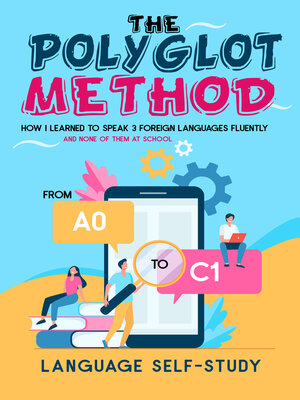The Polyglot Method
ebook ∣ from A0 to C1: How I learned to speak 3 foreign languages fluently and none of them at school
By Language self-study

Sign up to save your library
With an OverDrive account, you can save your favorite libraries for at-a-glance information about availability. Find out more about OverDrive accounts.
Find this title in Libby, the library reading app by OverDrive.



Search for a digital library with this title
Title found at these libraries:
| Library Name | Distance |
|---|---|
| Loading... |
Would you like to speak one or several foreign languages fluently, increase your general knowledge, travel or move to a foreign country and communicate with ease? Is your goal to switch careers, start a business abroad, get a scholarship or receive more professional offers? Do you want to make new friends and business partners all over the world?
Yes, you say, but...
- You have learned languages at school for many years without seeing results.
- You are too busy in everyday life and do not have time for studying.
- You feel embarrassed speaking or you have no one to speak to.
- You have the impression that you only waste your time and spend too much money on expensive learning material and language classes.
No more excuses ! The good news is: Everyone can learn several languages fluently and without language talent!
Polyglots speak so many languages because their methods are highly efficient compared to traditional ones. Also, they know how to deal with the most common issues:
- As beginners we don't really know how to start and spend too much time on things that do not bring any results.
- As advanced learners we may have difficulties in improving.
- We don't have much time available due to a busy schedule.
- We think we need to go abroad to learn a language.
- We lack motivation and give up too quickly.
- We don't know how to chose learning material and create a study schedule to get the most out of our learning units.
What is the key to success?
We need to understand which natural processes are involved in language learning, how we can stimulate them and eliminate all inefficient actions. We need to select learning material and tools to create a study schedule with maximum efficiency that optimises time and money spent. Integrating interesting content and applying strategies that help with lack of motivation are another key factor when it comes to language learning.
This content awaits you:
1. Introduction
In this chapter, the author explains why she failed learning languages in school and how she finally succeeded.
2. Why do we study languages in school and don't see results?
This chapter is about the efficiency of learning methodologies most school systems apply.
3. Why foreign languages are becoming increasingly important
4./5. Step-by-step method
In these two main chapters, the author describes how she went from a basic to a fluent language level for three foreign languages. It is about goal setting, time management and emphasises the difference of learning as a beginner or advanced learner. The author shares practical tips and learning methodologies regarding vocabulary, grammar and oral expression. Finally, common questions are discussed, such as: Should I learn with a teacher? Do I need to spend a lot of money? How do I chose the right learning material?
6./7. The most common beliefs and mistakes in language learning/FAQ
This part of the book discusses stereotypes and questions related to language learning such as: Should I go abroad to learn a language? Who do some people seem to learn quicker than others? Is there something like a talent for learning languages? What can I do about my accent? What should I do when I have no one to speak to? ...
8. Strategies for dealing with frustration and maintaining motivation
9. Maintaining a foreign language
10./11. Summary and checklist
12....







